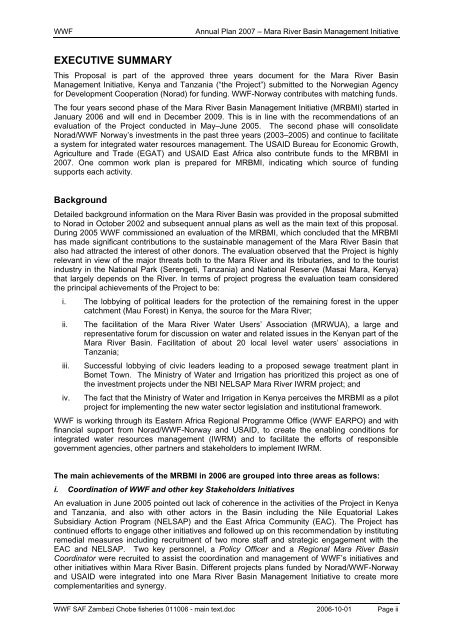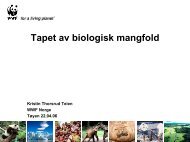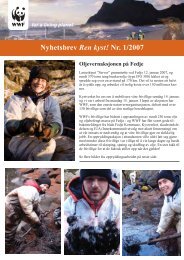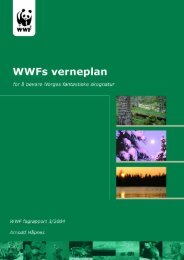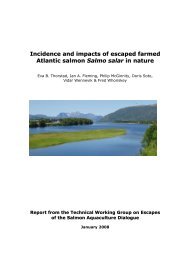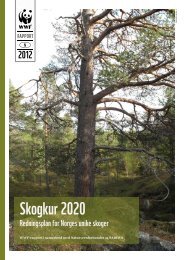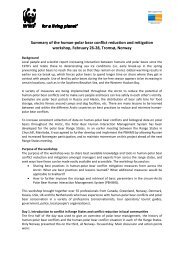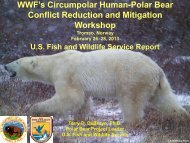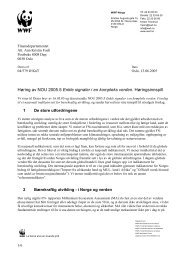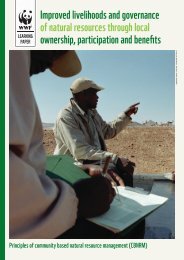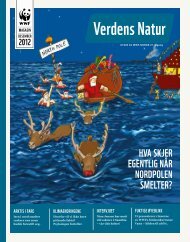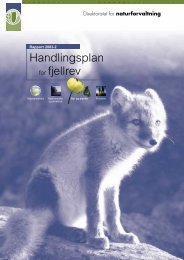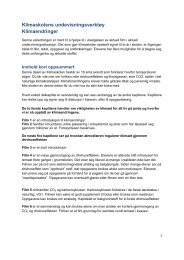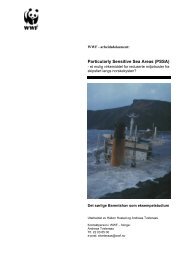WWF SAF Mara River Basin Project Proposal
WWF SAF Mara River Basin Project Proposal
WWF SAF Mara River Basin Project Proposal
You also want an ePaper? Increase the reach of your titles
YUMPU automatically turns print PDFs into web optimized ePapers that Google loves.
<strong>WWF</strong><br />
Annual Plan 2007 – <strong>Mara</strong> <strong>River</strong> <strong>Basin</strong> Management Initiative<br />
EXECUTIVE SUMMARY<br />
This <strong>Proposal</strong> is part of the approved three years document for the <strong>Mara</strong> <strong>River</strong> <strong>Basin</strong><br />
Management Initiative, Kenya and Tanzania (“the <strong>Project</strong>”) submitted to the Norwegian Agency<br />
for Development Cooperation (Norad) for funding. <strong>WWF</strong>-Norway contributes with matching funds.<br />
The four years second phase of the <strong>Mara</strong> <strong>River</strong> <strong>Basin</strong> Management Initiative (MRBMI) started in<br />
January 2006 and will end in December 2009. This is in line with the recommendations of an<br />
evaluation of the <strong>Project</strong> conducted in May–June 2005. The second phase will consolidate<br />
Norad/<strong>WWF</strong> Norway’s investments in the past three years (2003–2005) and continue to facilitate<br />
a system for integrated water resources management. The USAID Bureau for Economic Growth,<br />
Agriculture and Trade (EGAT) and USAID East Africa also contribute funds to the MRBMI in<br />
2007. One common work plan is prepared for MRBMI, indicating which source of funding<br />
supports each activity.<br />
Background<br />
Detailed background information on the <strong>Mara</strong> <strong>River</strong> <strong>Basin</strong> was provided in the proposal submitted<br />
to Norad in October 2002 and subsequent annual plans as well as the main text of this proposal.<br />
During 2005 <strong>WWF</strong> commissioned an evaluation of the MRBMI, which concluded that the MRBMI<br />
has made significant contributions to the sustainable management of the <strong>Mara</strong> <strong>River</strong> <strong>Basin</strong> that<br />
also had attracted the interest of other donors. The evaluation observed that the <strong>Project</strong> is highly<br />
relevant in view of the major threats both to the <strong>Mara</strong> <strong>River</strong> and its tributaries, and to the tourist<br />
industry in the National Park (Serengeti, Tanzania) and National Reserve (Masai <strong>Mara</strong>, Kenya)<br />
that largely depends on the <strong>River</strong>. In terms of project progress the evaluation team considered<br />
the principal achievements of the <strong>Project</strong> to be:<br />
i. The lobbying of political leaders for the protection of the remaining forest in the upper<br />
catchment (Mau Forest) in Kenya, the source for the <strong>Mara</strong> <strong>River</strong>;<br />
ii.<br />
iii.<br />
iv.<br />
The facilitation of the <strong>Mara</strong> <strong>River</strong> Water Users’ Association (MRWUA), a large and<br />
representative forum for discussion on water and related issues in the Kenyan part of the<br />
<strong>Mara</strong> <strong>River</strong> <strong>Basin</strong>. Facilitation of about 20 local level water users’ associations in<br />
Tanzania;<br />
Successful lobbying of civic leaders leading to a proposed sewage treatment plant in<br />
Bomet Town. The Ministry of Water and Irrigation has prioritized this project as one of<br />
the investment projects under the NBI NELSAP <strong>Mara</strong> <strong>River</strong> IWRM project; and<br />
The fact that the Ministry of Water and Irrigation in Kenya perceives the MRBMI as a pilot<br />
project for implementing the new water sector legislation and institutional framework.<br />
<strong>WWF</strong> is working through its Eastern Africa Regional Programme Office (<strong>WWF</strong> EARPO) and with<br />
financial support from Norad/<strong>WWF</strong>-Norway and USAID, to create the enabling conditions for<br />
integrated water resources management (IWRM) and to facilitate the efforts of responsible<br />
government agencies, other partners and stakeholders to implement IWRM.<br />
The main achievements of the MRBMI in 2006 are grouped into three areas as follows:<br />
i. Coordination of <strong>WWF</strong> and other key Stakeholders Initiatives<br />
An evaluation in June 2005 pointed out lack of coherence in the activities of the <strong>Project</strong> in Kenya<br />
and Tanzania, and also with other actors in the <strong>Basin</strong> including the Nile Equatorial Lakes<br />
Subsidiary Action Program (NELSAP) and the East Africa Community (EAC). The <strong>Project</strong> has<br />
continued efforts to engage other initiatives and followed up on this recommendation by instituting<br />
remedial measures including recruitment of two more staff and strategic engagement with the<br />
EAC and NELSAP. Two key personnel, a Policy Officer and a Regional <strong>Mara</strong> <strong>River</strong> <strong>Basin</strong><br />
Coordinator were recruited to assist the coordination and management of <strong>WWF</strong>’s initiatives and<br />
other initiatives within <strong>Mara</strong> <strong>River</strong> <strong>Basin</strong>. Different projects plans funded by Norad/<strong>WWF</strong>-Norway<br />
and USAID were integrated into one <strong>Mara</strong> <strong>River</strong> <strong>Basin</strong> Management Initiative to create more<br />
complementarities and synergy.<br />
<strong>WWF</strong> <strong>SAF</strong> Zambezi Chobe fisheries 011006 - main text.doc 2006-10-01 Page ii


